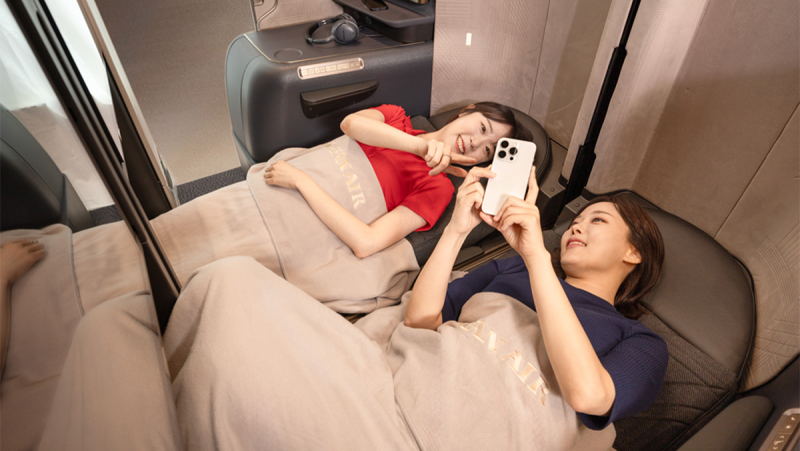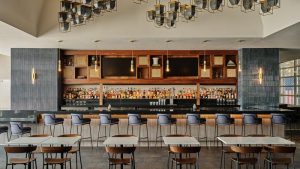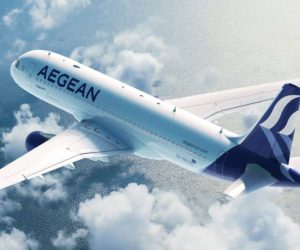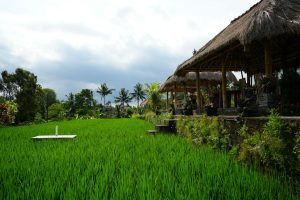
Korean Air has received its first Boeing 787-10 Dreamliner, and will launch its inaugural flight on July 25 from Seoul Incheon to Tokyo Narita.
The next-generation, eco-friendly 787-10 features the latest technology, superior fuel efficiency and reduced carbon emissions. This advanced aircraft will also debut Korean Air’s new Prestige Class cabin interior for business class passengers.
The 787-10 stands as the largest model in the 787 Dreamliner series. Its fuselage spans approximately 224 feet, making it about 16 feet longer than the 787-9. This increased length enables the 787-10 to carry 15 percent more passengers and cargo.
The 787-10 is said to have enhanced efficiency, passenger comfort, reliability and operational capabilities. Unlike traditional aluminum alloys, the aircraft’s fuselage is made from carbon composite materials, which reduce weight and increase durability, and lower carbon emissions by over 20 percent compared to similar-sized aircraft.
The wings and engines of the 787-10 are designed with advanced technologies to maximize efficiency. The wingtips are equipped with raked wing tips, which improve takeoff and climb performance, improving fuel efficiency.
The 787-10 is equipped with advanced GEnx-1B74/75 engines from General Electric, the same model which is found on the Boeing 787-9. The engine nacelles feature chevron nozzles, notable for their zigzag pattern, that significantly reduce noise from engine exhaust.
The maximum range of the 787-10 is approximately 6,934 miles, about 870 miles shorter than the 787-9 due to the longer fuselage and increased seating capacity.
(Korean Air)
Korean Air’s 787-10 aircraft is configured with a total of 325 seats, including 36 Prestige Class seats and 289 economy class seats.
The newly introduced Prestige Class seats are “Prestige Suites 2.0.” The design features traditional Korean patterns, including “Jogakbo” patchwork.
One of the standout features of the Prestige Suites 2.0 is its innovative design, which prioritizes passenger privacy. Each seat functions as a virtually independent space, with an open top. The seats fully recline to a flat 180 degrees, transforming into a bed. The seat length has been extended to 78 inches, with a seat pitch of 46 inches and a seat width of 21 inches.
Additional convenience is provided by expanded personal space next to the armrest, featuring a table for cups and small personal items, a personal storage compartment, a wireless phone charger, dual 220V/110V outlets, and two high-speed USB-C ports.
The economy class features seats in a 3-3-3 configuration. The seats offer a recline of up to 120 degrees with headrests adjustable in multiple directions. The seat pitch is 32 inches, and the seat width is 17.2 inches.
High-resolution monitors supporting 4K resolution offer an enhanced inflight entertainment experience in both classes. Prestige class passengers can enjoy 24-inch monitors with Bluetooth audio support, while economy class seats feature 13-inch monitors, approximately two inches larger than those on other models. In-flight Wi-Fi service is also available.
The 787-10 will initially be deployed on short-haul routes to stabilize operations, before being deployed on long-haul routes such as the Seoul Incheon-Vancouver route. Vancouver, a major gateway city in western Canada, sees significant travel demand as well as significant transit traffic from Southeast Asia. Korean Air intends to deploy the 787-10 on other high-demand routes, including those to the western United States and Europe.
Related Articles
Tradewind Aviation Expands Scheduled Flights to the Caribbean
AmEx Opens Centurion Lounge at DC’s Reagan National Airport
Marriott’s Luxury Group Partners With Blade Urban Air Mobility
Pan Am to Recreate Historic Routes Through Private Air Journey






